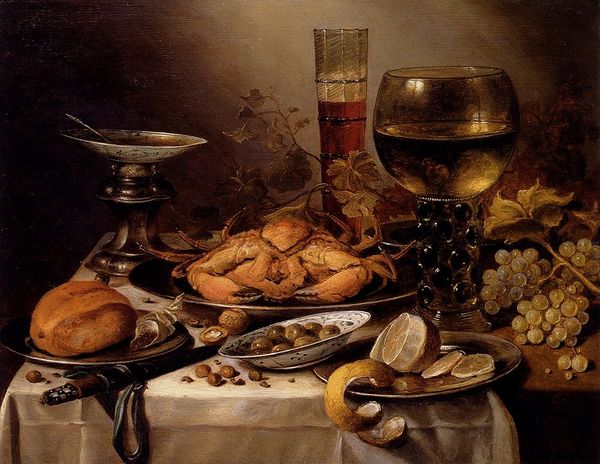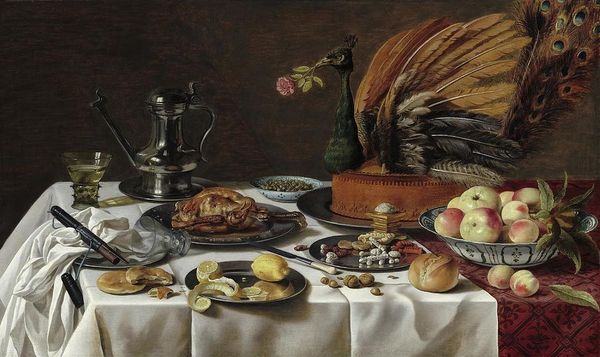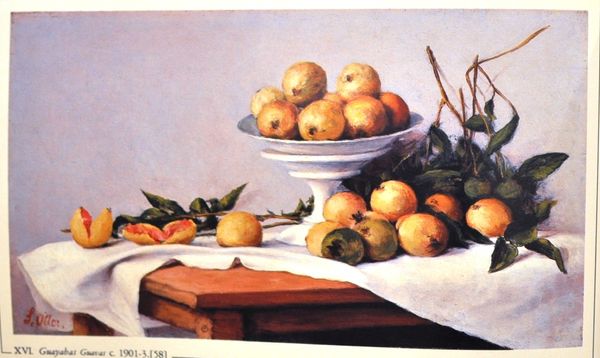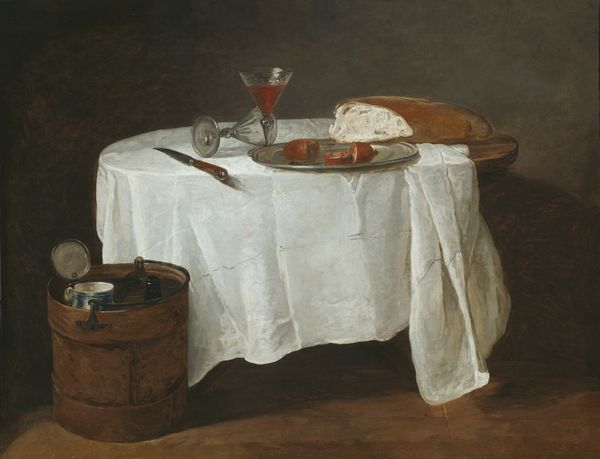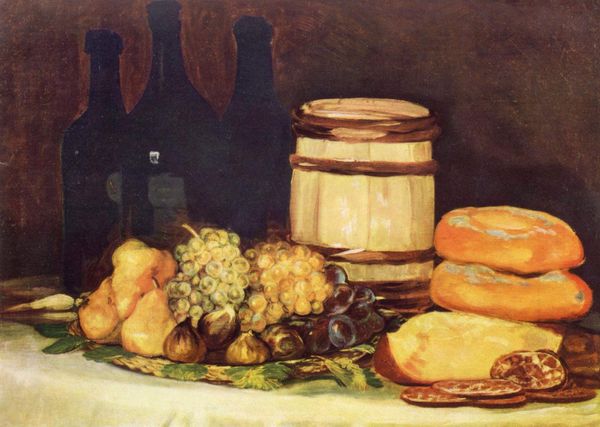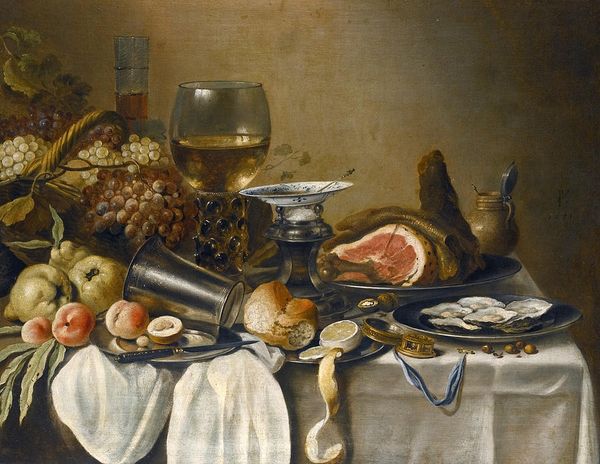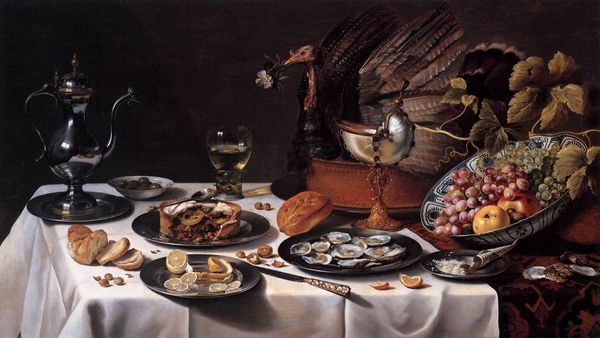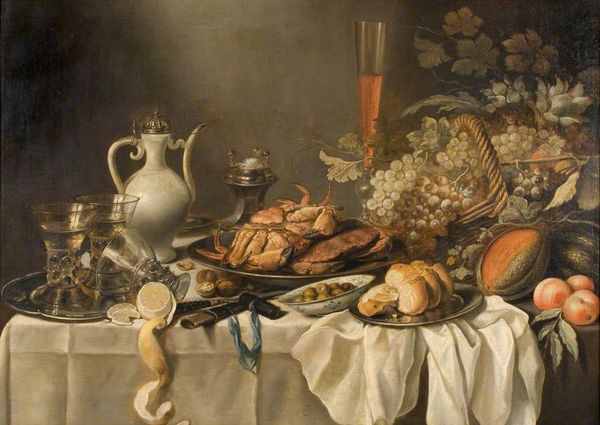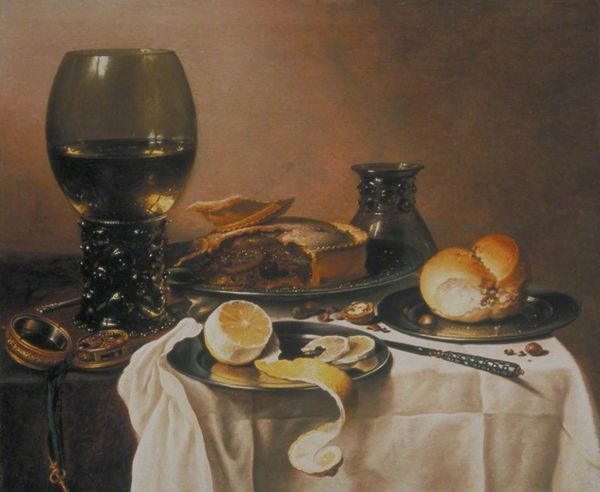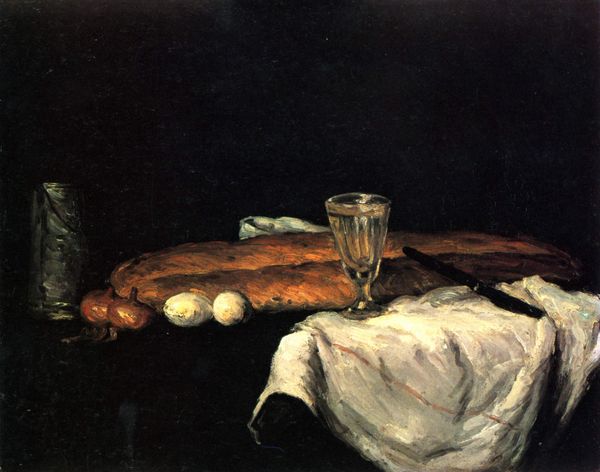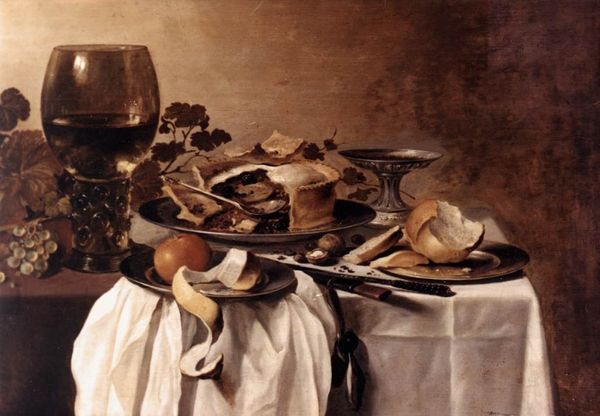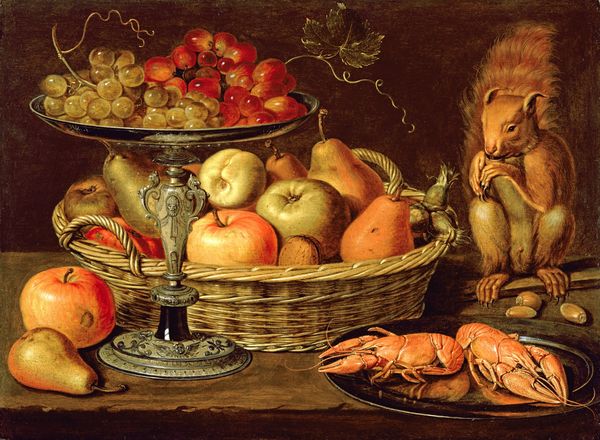
Still Life with Cheeses, Artichoke, and Cherries 1625
0:00
0:00
oil-paint
#
baroque
#
oil-paint
#
oil painting
#
flemish
#
realism
Copyright: Public domain
Curator: Today we're looking at Clara Peeters' "Still Life with Cheeses, Artichoke, and Cherries," an oil painting dating back to 1625, now residing here at LACMA. Editor: Immediately, the sheer density strikes me. So much concentrated, contrasting texture, the gleaming metalwork versus the soft curves of the cheeses, the bristling artichoke against the smooth cherries. It's quite opulent. Curator: Opulence, certainly. Still life paintings in this era weren’t simply about representing objects. They were about displaying wealth and social status. These aren't your average cheeses. Editor: Agreed. The cheeses stacked almost architecturally, hinting at prosperity and abundance. The Artichoke in itself stands out with the red tips and unique placement. There's an undeniable erotic symbolism to that central placement and partial opening. Artichokes often represented hidden, internal love and sexual mysteries at the time. Curator: I see that, but wouldn’t overstate the claim. Though the display of worldly possessions signaled status, the presence of the half-eaten bun or visible decay reminds us of vanity’s swift decline and the ever-ticking clock of time, which the Catholic reformation employed, don’t you think? The imagery is deployed for ideological concerns. Editor: Ah, "vanitas"—yes, I concede the symbolism of decay fits that framework perfectly! Perhaps then the gleaming objects represent our vain attempts to freeze and eternalize the moment while the "decay" is a rude and humbling awakening. Curator: Precisely. But Peeters doesn't dwell solely on didactic moralizing. Note how she uses light to draw our eye across the painting, the soft highlights caressing the surfaces. What social conditions permitted a female artist, then, to create such pieces? To address such symbolism. Who were her buyers, her patrons? These considerations help us consider the value that her paintings held and continue to offer to our cultural understanding of society. Editor: Agreed. Bringing us back to earth—these works hold many facets when peeled away, like the leaves of an artichoke! Curator: Precisely, our collective knowledge builds the narrative surrounding the paintings.
Comments
No comments
Be the first to comment and join the conversation on the ultimate creative platform.
